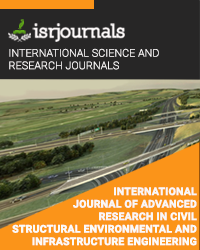desalination of seawater and deduction of corrosion
S.Theerkadharshini,V.Paari Chackravarthy,M.Ram kumar,R.Arun raj,K.Muthu prince
Published in International Journal of Advanced Research in Civil,Structural,Environmental and Infrastructure Engineering and Developing
ISSN: 2320-723X Impact Factor:1.7 Volume:2 Issue:2 Year: 07 April,2016 Pages:185-193

Abstract
Today currently employ reverse osmosis RO as the method of desalinating water for use as potable water on sea vessels. RO desalination is very effective however, it is subject to scaling and fouling, which reduces the lifespan of the membrane and increases cost. The current pretreatment system for the RO is cartridge filtration. The proposed system consists of a dual media filter, filled with granular activated carbon GAC. The media filter is followed by a 20 µm cartridge filter. Backwashing of the media filter is automated, and the water is diverted to the second filter, ensuring continuous treatment. The cartridges only require replacement once per 45 days, thus significantly reducing the needed storage area and off line time. Dual media filtration reduces the turbidity, while cartridge filtration and GAC decrease the concentration of organic carbon. This combination satisfies the treatment system objectives. The RO pretreatment system is designed to produce quality water.An experimental investigation is carried out on a concrete containing for M.20 grade concrete RCC. Beam is casted using normal bore water and the desalinated water. Material was produced, tested and compared with conventional concrete in terms of workability and strength. These tests were carried out on standard beam of 700.150.150 mm for 7 and 14 days to determine the mechanical properties of concrete corrosion and flexural strength .It was cured for 14 days and then soaked in sulphuric acid for 24 hours. After this process, the beam was tested for its corrosion and desalinated sea water found to have percentage of corrosion more than the percentage of corrosion noticed in beam made using ordinary bore water.
Kewords
Reverse osmosis, Membrane, Granular activated carbon, Turbidity, workability
Reference
Y. Li and K. Tian, Application of vacuum membrane distillation in water treatment, Journal of Sustainable Development, vol. 2, no. 3, pp. 183.186, 2009. B. L. Pangarkar, P. V. Thorat, S. B. Parjane, and R. M. Abhang, Performance evaluation of vacuum membrane distillation for desalination by using a flat sheet membrane, Desalination and Water Treatment, vol. 21, no. 1.3, pp. 328.334, 2010. L. F. Greenlee, D. F. Lawler, B. D. Freeman, B. Marrot, and P. Moulin, Reverse osmosis desalination water sources, technology, and todays challenges, Water Research, vol. 43, no. 9, pp. 2317.2348, 2009.

